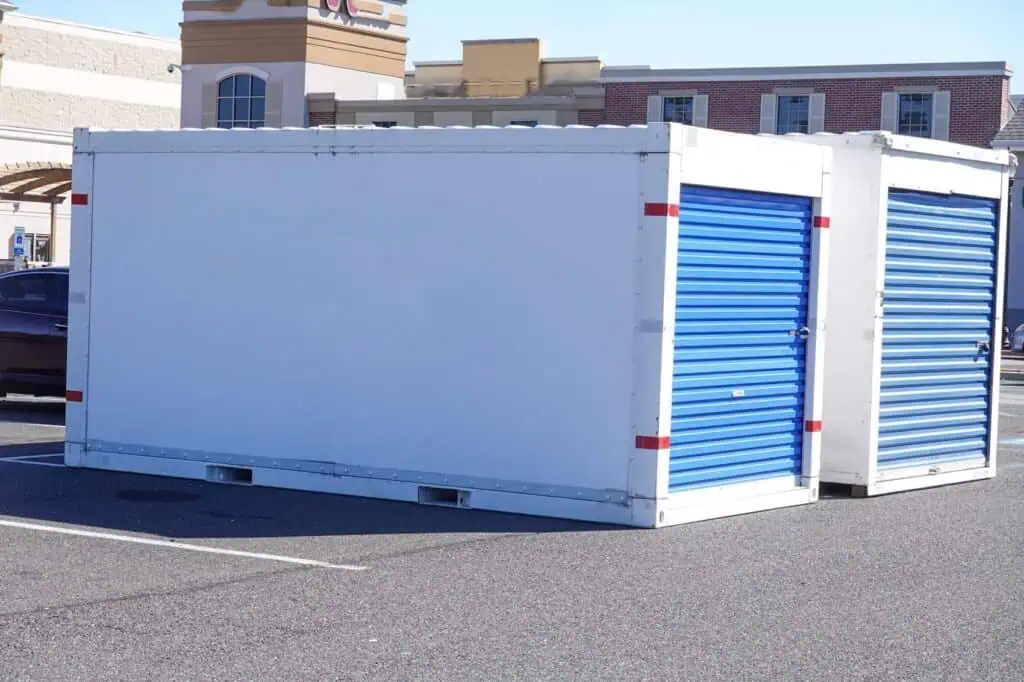6 Things To Know About Office Relocation in 2024
Posted in: I'm Moving, Corporate Relocation, Moving AdviceIf you run a business, then you know the global pandemic’s influence on shifting office norms. Despite a lot of buzz about CEOs mandating RTO, the top 10 most populous US cities saw less than 50% office occupancy in the final quarter of 2023.
Given the rise in flexible work and less need for office space, companies now have more freedom to operate from anywhere. Rather than being confined to a specific location, business owners can move their offices out of top-dollar markets to save on costs. Some are closing their doors altogether, opting instead to manage operations entirely from home.
While an office relocation can be seriously beneficial, there are some logistical factors to think about before getting started. So if you run a small or medium business that’s undertaking a move, consider this your roadmap.
Office Relocation in the New Workplace
First off, what does office relocation mean exactly? When you’re dealing with a business, it’s not simply moving to a new location — you have to inform vendors, employees, and clientele in addition to rebuilding your IT infrastructure.
But with that said, office relocation doesn’t always entail trading one location for another. You could downsize, or move entirely to a remote environment.
But why consider a remote (or hybrid) office relocation? Here are some perks to pique your interest:
- Global Workplace Analytics estimates the average small or medium business can save as much as $11,000 for each employee who works from home at least part-time. Those savings are due to increases in productivity, lower rates of turnover and absenteeism, and less overhead costs for office space.
- A McKinsey poll of 100 business executives found that offering remote or hybrid work options can lead to a 58% boost in individual performance, a 54% boost in diversity and inclusion, a 49% boost in team productivity/collaboration, and a 36% boost in customer satisfaction.
- Accenture’s Future of Work Report shows that 68% of high-growth companies allow their teams to work from anywhere. This initiative makes employees 2.3 times easier to retain, and it raises the average worker’s “Net Better Off” score by 21 percent. This translates to 5% more revenue.
- In 2021, Yelp chose to downsize its office space in San Francisco and New York while allowing its 3,900 employees to continue working from home. After just one quarter of decreasing real estate in these markets, Yelp cut costs by 13% and expects to save $10–12 million a year through 2024.
6 Things to Know About Office Moving
Whether you downsize to a smaller space, move to a less expensive area, or ditch bricks and mortar altogether, an office relocation could be the fresh start your business needs. It’s a major transition, but don’t let all those moving parts intimidate you. Here are six factors to keep in mind as you embark on relocating your office.
1. You Have Lots of Options
The first step in any successful office relocation is the physical move itself. You have three moving options to choose from: DIY, hybrid, or full-service moving. Many businesses prefer the full-service route due to sheer convenience, but if you want to curb expenses, the other two choices are potentially a lot more affordable. Here’s a breakdown of each moving option, so you can determine which suits your needs the best:
- DIY Move: With this option, you handle all the logistics yourself. This includes packing boxes, loading the vehicle, transporting your items, then unloading and unpacking once you arrive. The average cost is $660 (this will fluctuate based on travel distance), making it the cheapest of all three methods. For a smaller office, it’ll take you about 31 hours to complete this kind of move from start to finish. If you’re on a budget or want control over each aspect of the move, DIY is for you. But be advised that it’s time-consuming and labor-intensive.
- Hybrid Move: With this option, you split the workload between your business and a team of hired helpers. Your job is to pack the boxes, supply the vehicle, transport the items, then unpack it all. Meanwhile, the moving helpers will load and unload for you. The average cost of a hybrid move is $910, and the process takes smaller businesses about 21 hours. While not as affordable as DIY, this option is still cost-effective — plus, it won’t require as much effort from you and your employees, so it’s definitely worth considering. Moving labor can also take care of packing and disassembling (and reassembling) furniture if you’d prefer.
- Full-Service Move: With this option, a hired moving company does almost all the work. Aside from packing and unpacking (that’s still on you unless you pay for these as extra services), full-service movers will handle the rest. They’ll provide the truck, load the boxes, transport items, then unload everything at the final destination. But there are some drawbacks to be aware of. On average, a full-service move costs $2,568 (or upwards of $6,000 for long distances). It also requires a significant amount of planning, and can take several days for all the items to arrive if you’re moving long distance.
2. It’s Worth Considering Portable Storage
If you plan to downsize or transition to fully remote, or if you’re looking for some flexibility, portable storage containers can be a godsend for businesses. These units come in various sizes, and the average monthly cost is $180–$300 (significantly cheaper than a full-time office space). You can also store them in multiple locations — a local storage center, outside your business in the parking lot, or the driveway at home.
A portable container is a convenient, accessible, and secure place to house business files or documents, overstock inventory, and other items you don’t want to keep onsite. Portable storage is also useful if you’re remodeling the new office facilities before moving in. You can use your units for storing jobsite materials and tools as well as office furniture, making it easier to keep business operations going while renovations are underway.
3. Corporate vs. Residential Movers
Just because you’re moving a business doesn’t mean you need to opt for a corporate mover. In fact, there’s not much of a difference between a regular residential moving company and an office relocation company. The art of moving is basically the same whether you’re moving a home or a business facility.
The only difference you’ll notice is when it comes to billing. Corporate movers can invoice on net-30 terms, accept cash on delivery (COD), or offer a combination of both, whereas residential movers usually charge COD. Also, keep in mind that corporate movers are always full-service, so if you’re looking to cut expenses, this may not be the best option. Whichever route you choose, make sure your moving company is licensed in the state you’re relocating to.
4. There Are Ways to Cut Moving Costs
It’s no secret that costs everywhere are on an upswing, and inflation is no stranger to the moving industry. As of writing, the national average for fuel prices is currently at $3.68 per gallon, with certain states exceeding $4.50, making even DIY moves extra pricey. Not to mention, moving expenses in general have increased by 5–10 percent all across the U.S. However, before you stress out, here are a few strategies to help minimize your office relocation expenses:
- Sell or donate most of your office equipment. If you’re about to downsize or transfer business operations to your home, then chances are, you won’t need all the furniture, equipment, and decor from your old office. So don’t bother taking these items — the less you move, the less it will cost.
- Forgo the cost of hiring full-service movers. While the full-service experience is an easy and convenient option, it’s also the least affordable. If you’re able to go DIY or hybrid, you can curb some serious costs by renting a truck yourself and hiring a few helpers to do the heavy lifting.
- Skip purchasing boxes and packing materials. Between boxes, tape rolls, stretch wrap, foam cushions, tie-down straps, and other materials, you can expect to fork over as much as $550 for a moving supplies kit. So don’t buy new boxes — accumulate them over time from local supermarkets, liquor stores, furniture retailers, or neighbors.
5. You Need a Project Manager
Planning for an office relocation is a lot of work, but you can’t let it overshadow your normal business operations. This is where a project manager comes in. Choose a competent, trustworthy, and organized member of your team, then delegate all the administrative moving tasks to this employee.
Of course, you’ll want to check in with your moving project manager regularly to see their progress and make final decisions. But funneling most of the daily execution through a point person will free your schedule to focus on keeping your company running smoothly during the transition.
Here are some of the office relocation tasks that a project manager can spearhead:
- Setting a feasible budget for the move and gathering price quotes from moving companies or moving helpers
- Tracking important dates, such as when the lease terminates at your current location and when you can move into the new space
- Notifying relevant suppliers, vendors, banks, government organizations, and other service providers of your change in address
- Taking inventory of office furniture, equipment, and amenities to determine what you need to pack versus what you can sell or donate
- Decluttering office records and purging the files you no longer need to keep
- Decommissioning all technology in the office your team is about to vacate and coordinating with IT staff or vendors to rebuild your infrastructure at the new office
- Updating marketing materials to reflect the business’s new location and contact information
- Overseeing the packing, loading, and other physical moving activities
6. Communication Is Key
One of the most important ways a corporate move differs from a residential move is the scope of people impacted by the relocation — namely, your staff and customers. So how do you keep these stakeholders informed? It all comes down to regular, transparent communication. Here’s how to ensure both employees and customers have all the necessary information — and feel excited about your upcoming move.
How to Communicate with Employees:
- Alert your staff about the move as early as possible, so they have time to mentally adjust to the changes and make necessary arrangements
- Offer transfer packages if the office relocation is long-distance or out-of-state
- Discuss flexible remote or hybrid work options and confirm that employees have access to the equipment and virtual tools they’ll need to successfully work from home
- Establish a feedback loop in which all team members at each level in the organization can ask questions, express concerns, or seek clarity about the impending move
- Email an office relocation FAQ sheet to everyone with all the relevant information they need to know. You’ll also want to send out emails and make announcements in meetings whenever there’s an update to share, so the whole team stays informed at each stage in this process
How to Communicate with Clients:
- Use this office relocation as an opportunity to connect with all your existing and previous clients, or potential clients. Email an announcement to detail the reasons for this move (such as company growth or expansion) and share the exciting news on social media
- Send regular emails to make sure your customers are up to date on pertinent developments in the office relocation process
- Plan a “Grand Re-Opening” to unveil the new location to clients once you’re all moved in
There are many reasons to undertake an office relocation, whether it’s downsizing to curb real estate costs, transferring operations into a more affordable market, or switching to a fully remote business model. No matter what kind of office move you have planned, be sure to consider the points above for a successful experience.










